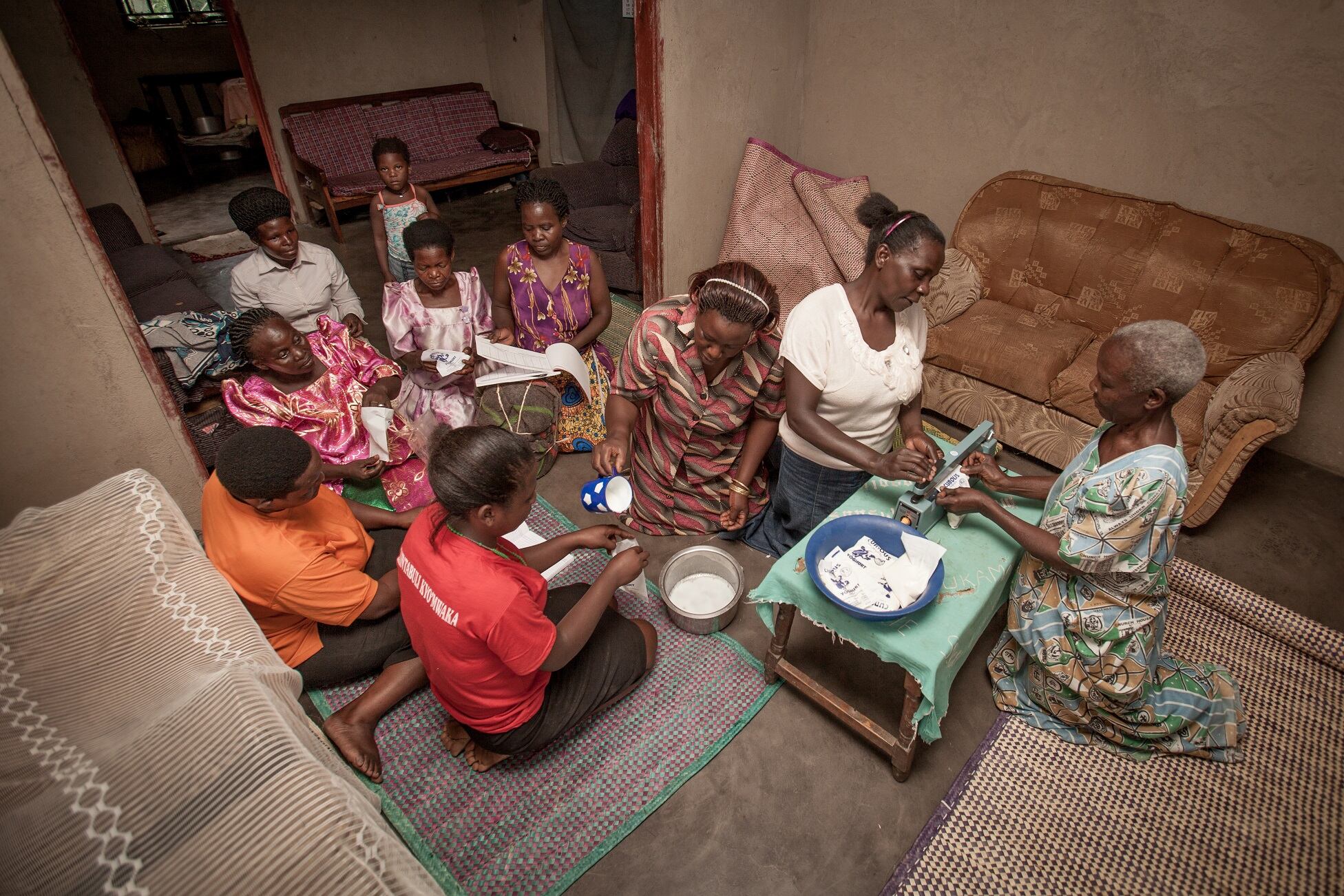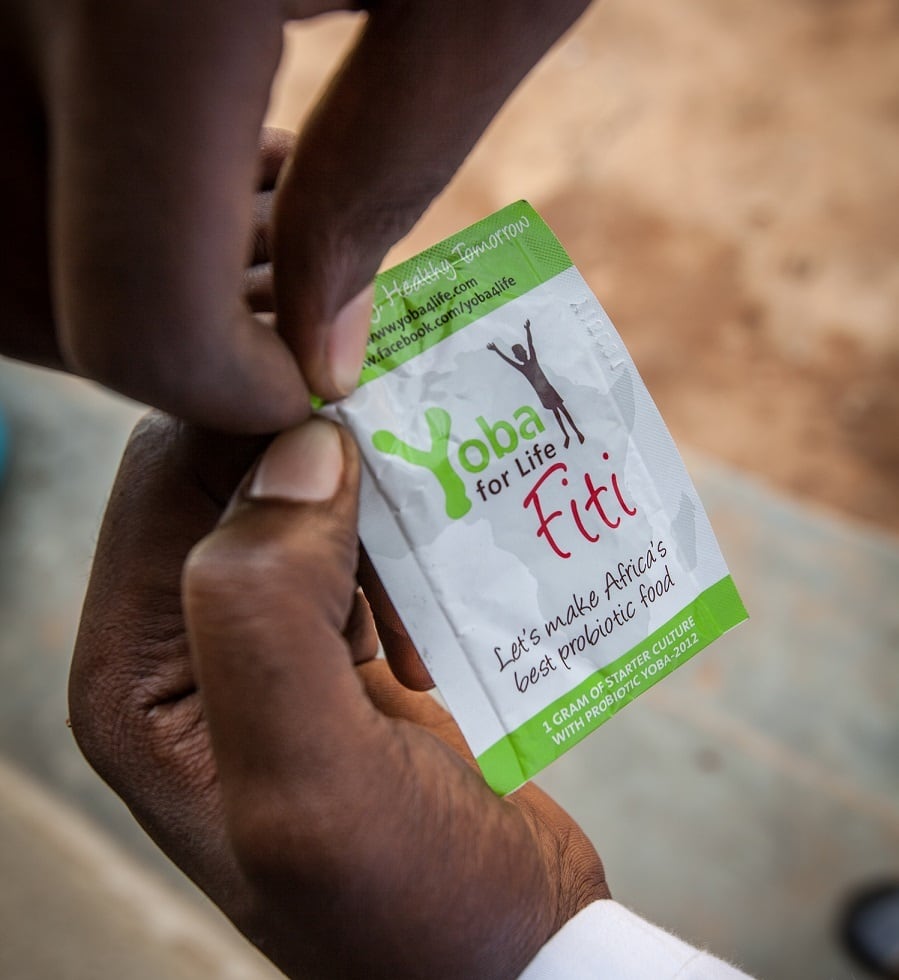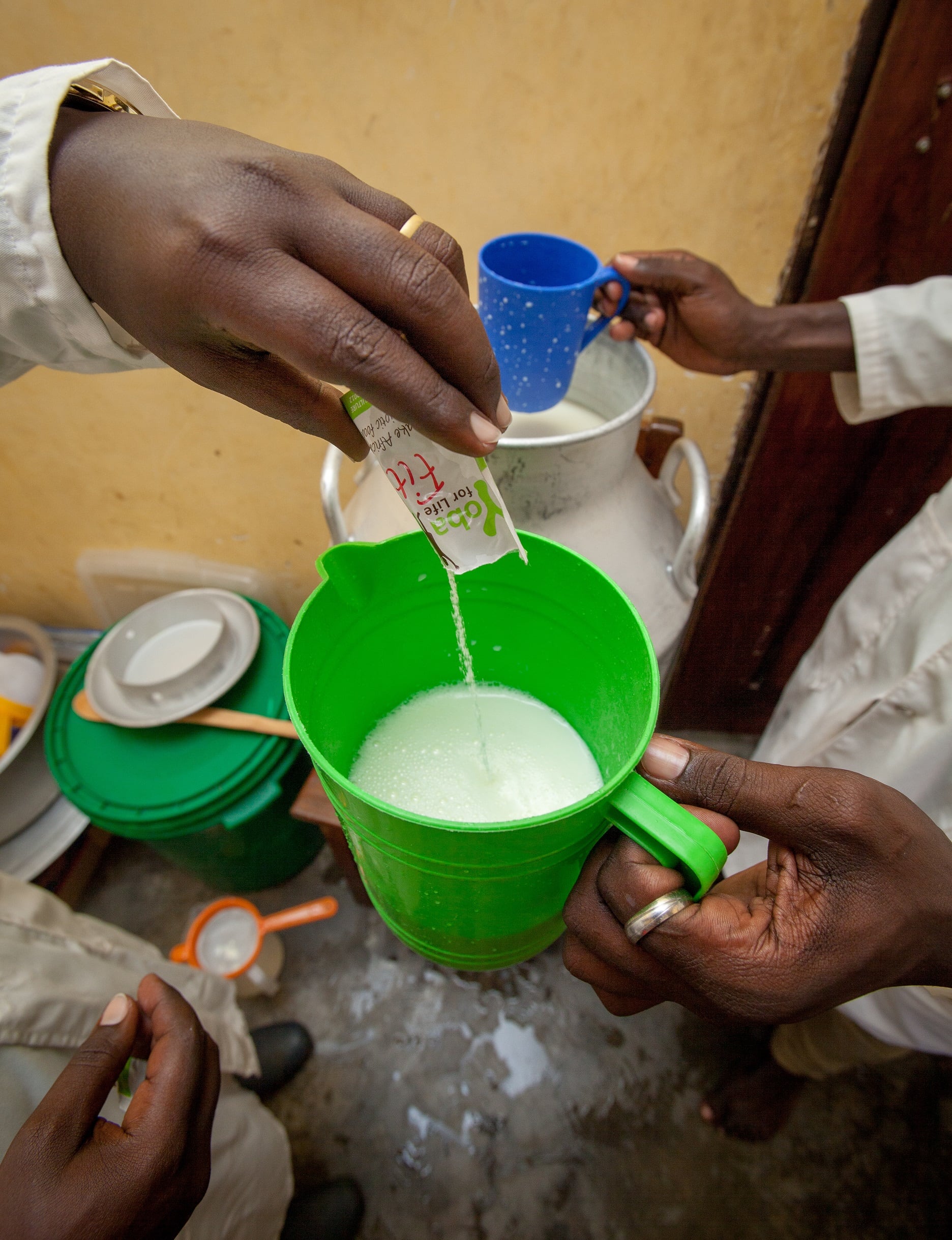The Yoba-for-Life Foundation (Yoba is derived from yogurt bacteria) is the brainchild of Prof Remco Kort and Wilbert Sybesma and aimed to develop a cheap probiotic that should also be the best described and with the best evidence. This led to Lactobacillus rhamnosus GG (LGG), which has been the subject of over 800 scientific publications.
LGG, at the time, was a trademark of Valio in Finland, but the patent had expired (Chr Hansen acquired the LGG business from Valio in 2016).
Following the example of generic medicines, Kort and Sybesma aimed to produce a “generic” probiotic, and outlined their concept in a paper in Trends in Biotechnology. They sequenced their Lactobacillus rhamnosus yoba strain to confirm that it was so similar to the original LGG strain that they could “copy and paste” the scientific substantiation behind LGG and connect it to L. rhamnosus yoba.
“The next step was to go to Africa and see how the probiotic would grow in African cows’ milk,” Sybesma told us.
Challenges
Just having the strain was not enough; the organization had to figure out a way to overcome the issue that L. rhamnosus yoba does not like lactose. Working with CSK Food Ingredients in the Netherlands, the solution was to include Streptococcus thermophilus, which pre-digests the lactose to glucose and galactose and provides the food for L. rhamnosus yoba. “It’s a synergistic effect,” explained Sybesma.
The last technical issue was to put these mixed strains together in small sachets. Data published in 2015 in Microbial Cell Factories showed that the viability of L. rhamnosus yoba was “stable during growth in milk for two rounds of fermentation. Sachets prepared with the two strains, yoba […] and [S. thermophilus], retained viability for at least 2 years.”
Stimulating local business

The sachets are produced in Europe – the probiotic is grown in the Netherlands, then freeze-dried in Austria and blended with a very dry powder, and then back to the Netherlands to be sealed in the sachets.
The long-term goal will ultimately be to produce this seed culture in Africa, but until the correct facilities and technology infrastructure are in place it will remain in Europe. “Although I don’t like that we’re importing the seed culture, a one gram sachet can be multiplied by a factor of 1,000 during the fermentation. So, in fact most of the bacteria are locally produced” explained Sybesma. A one-gram sachet is enough for local producers to make 100 liters of probiotic yogurt.
The local producers can then sell the yogurt and make it into a local business. The products are not branded as Yoba, explained Sybesma, because, “we want them to take responsibility for their own business and have pride in their own product, but they can add ‘Yoba Inside’ to the label to differentiate from other products”.
Heifer International

Yoba started with one community in Uganda staffed by volunteers from Holland, Germany, and Switzerland, and then partnered with Heifer International, a charity that works to end world hunger and poverty by empowering local communities with the gift of livestock. Heifer has established dairy co-operatives and operations across Africa, and Yoba “came at the right time to partner with them,” says Sybesma.
“Milk has a short shelf-life, but with a starter culture you can make yogurt and that has a longer shelf-life and a higher nutritional value,” he added.
In addition to Heifer, a key collaborator along the way has been Gregor Reid, PhD, Chair of the Canadian Centre for Human Microbiome and Probiotics at the Lawson Research Institute and professor of microbiology & immunology at the University of Western Ontario. Prof Reid is a pioneer in launching healthy probiotic yogurts all-over Africa with the Western Heads East developmental probiotic yogurt project in Mwanza, Tanzania.

Together they successfully applied for a grant from the Canadian International Food Security Research Fund (CIFSRF) for $1.45 million (€1.25m) to expand from Uganda to neighboring Tanzania and Kenya.
“The grant from CIFSRF and working with Heifer were two important developments for Yoba,” Prof Reid told us. “We were the first probiotic yogurt in Africa (from what we know).”
Today, there are over 100 communities in Uganda producing Yoba probiotic yogurt, with an additional 55 in Tanzania and about 20 in Kenya, said Sybesma.
“This really is the bottom of the pyramid and the benefits extend right across the value chain,” added Prof Reid. “I think it has been an amazing journey and there’s still a lot to do.”
Supply & demand
Another huge opportunity has been a partnership with the UNHCR (the United Nations High Commissioner for Refugees) for bringing Yoba into refugee camps. “We’ve heard that people are waiting for income-enhancing opportunities in these camps, and we can help,” said Sybesma.
There are almost 22.5 million refugees around the world, with over half of them under the age of 18, according to the UNHCR.
While the supply side is now well covered, work has also focused on boosting demand. “How do you explain probiotics in developing nations? We made a movie with African actors, telling a story about a soccer playing brother and sister, and their mother has a business selling Yoba yogurt,” said Sybesma. “People can see what it means to have this probiotic.”
Kort and Sybesma have also found that L. rhamnosus yoba grows in millet, maize and wheat, and many staple fermented foods can be enhanced with this strain.
“Our ambition is to improve health and wealth, and we’re now hoping to fund studies to assess the health impact,” explained Sybesma. “If the results are positive – and I’m quite confident it will be confirmation of everything done with this strain in the past – then it provides a locally available solution for health.”
Sources:
2012, Volume 30, Pages 613-615. doi: 10.1016/j.tibtech.2012.09.002.|
“Probiotics for every body”
Authors: R. Kort and W. Sybesma
2015, 14:195, doi: 10.1186/s12934-015-0370-x
“A novel consortium of Lactobacillus rhamnosus and Streptococcus thermophilus for increased access to functional fermented foods”
Authors: R. Kort et al.

